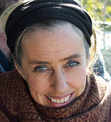Georgi Y. Johnson's Blog: I AM HERE - Opening the Windows of Life & Beauty, page 28
July 21, 2016
The Bread Crumb Trail of Inherited Family Trauma
Although we might believe that our suffering is a private affair, this haunting, background agony could also be the cry of the separate selves of generations long passed. Is your terror of abandonment an epigenetic marker left by a great uncle interned as insane? Is your perennial guilt the trademark of the grandmother forced to guard death camps in World War II? According to Mark Wolynn, the deeper layers of suffering in our psyche might not be personal at all; they can be part of a long chain of human trauma, passed through epigenetic markers from generation to generation.
Guess what: It didn’t start with you.
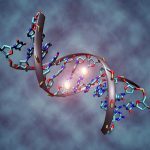
Changes in organisms caused by the modification of gene expression.
We like to think of ourselves as living mysteries in a positive sense, but perhaps the most cryptic part of the mystery of how we are when we suffer can be decoded and healed. Working with inherited family trauma, Mark Wolynn thinks it can. “We all walk around with mysteries: anxieties we can’t explain; depressions we never get to the bottom of; obsessive thoughts about our children or our partner leaving us; panic attacks or phobias we never really understand.” For Wolynn, author of IT DIDN’T START WITH YOU: How Inherited Family Trauma Shapes Who We Are and How to End the Cycle, each human being has a piece of the ancestral pizza of inherited trauma and often, he says, it’s the loving and caring ones that take the biggest slice.
The legacy of family trauma is topical right now, partly due to the discovery of gene alteration through epigenetics. Epigenetics is the study of changes in organisms caused by the modification of gene expression rather than alteration of the genetic code itself. It all began earlier this decade as scientists in 2013 discovered that certain odors with a traumatic history would trigger a stress response in mice of succeeding generations. Science later revealed the traumas of World War II are showing up in the genes of holocaust descendants. “Instead of numbers tattooed on their forearms, they may have been marked epigenetically with a chemical coating upon their chromosomes, which would represent a kind of biological memory,” reported a ground-breaking paper in also in 2013. Just this year, scientists from Tel Aviv University addressed the open question: can this genetic damage be corrected? Yes, they answered, there is a high chance that healing the trauma in the grandchild, will remove the epigenetic tag, meaning it’s no longer passed on. The question is, how do you heal a trauma that never happened to you?
You Said It
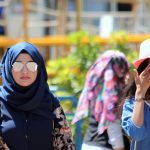
Family trauma: in the blind spots, disguised as reality.
I’m going to kill myself. I’ll lose everything. I’ll be locked away. I’ll go crazy. I don’t deserve to live. This is the language of inherited trauma, repeating as stress-oozing mantras through the undercurrents of mind, sneaking into conversation between sentences, often disguised as small talk. These are the covert hallmarks of generational trauma that Wolynn has a gift for detecting.He calls his method for breaking the cycle of inherited trauma The Core Language Approach.
Wolynn, who facilitates workshops, trainings and individual sessions, will be speaking at SAND California this year. “I want to hear your trauma language. Tell me about your worst fear, the fear you’ve had your whole life. Maybe it’s a feeling you’ve had since birth. If your life suddenly fell apart, if things were to go terribly wrong, what’s the worst thing that could happen to you?”
Working with core language: whether mental, emotional or physical, Wolynn follows the trail back through the generations to help people feel and heal the place where it began: where the expression of a gene may have become silenced or activated by a stress-inducing epigenetic tag. The fear of going crazy or getting locked away, for example, could be traced back to the aunt that no-one talks about that died tragically in a mental institution. “I don’t deserve to live,” could be connected to the unresolved guilt of having killed another human being. Just a few generations after the horror of two cataclysmic world wars, it’s easy to imagine that we could all be tagged in some way.
“Sometimes, people don’t know that they’re affected, because they haven’t decoded their core language. I teach people how to become detectives of their trauma language, so they can follow the breadcrumbs and make the link to where a traumatic event may have originated in a previous generation. When we do this—when we find the language and we make the link—it’s like finding the missing piece of the puzzle that lets the whole picture come into view and gives us the context for why we feel the way we feel.”
Biological Secrets
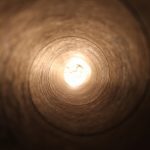
Traumatic energy seeks resolution through the bodies of the ancestors.
Melissa began cutting herself as a teenager. When she was 14, she literally carved the words“FAT PIG” into her inner thigh. As the story unraveled, it turned out that Melissa was adopted, but was not told this until she was 21. She went to visit her biological mother and learned that she had been raped when she was 14 (the same age that Melissa had carved the words ‘fat pig’ into her thigh), and this is how she had been conceived.
“She visits her biological mother and she finds out that her mother, at exactly the same age, was raped. When Melissa came to me, she was 27 and had been cutting her body for 13 years. Iasked her: ‘Fat pig, what is fat pig?’ And she says: ‘A fat pig is someone who takes something that isn’t his.’ She used the pronoun ‘his’, but she had never made the connection, and of course, she didn’t know why she cut herself. Yet, her trauma language was etched into her body.”
In some cases involving self-injury, explains Wolynn, “There’s can be a perpetrator and a victim in the family history that no one talks about, and a trauma that hasn’t been resolved. It’s very dual: bad and good. The victim-perpetrator experience gets expressed in the behavior of the self-injurer. In a single action, she perpetrates on herself, and at the same time, she is victimized by herself. When Melissa carved FAT PIG on the sexual part of her leg, she was carving the action of the rape of a mother she never knew she had. She was enacting it as if it were her thigh that the rapist was on.” After working with Wolynn, Melissa stopped cutting.
Nonduality and Trauma
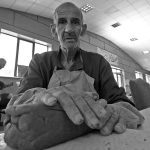
The ‘crazy’ uncle that everyone forgot.
“When we uncover this trauma language and make the link, we can have more peace. If the light never shines on this language and never shines on this link, the trauma can stay embedded in our experience as ‘ours,’ and that’s the problem,” explains Wolynn, who believes that trauma, as suppressed experience, has a charge of energy that seeks release, if not through the body of the victim, then through the bodies of the children in future generations. “The energy of a trauma doesn’t dissipate by itself,” he explains. “It doesn’t stay boxed up.”
Trauma is literally alive in our DNA, often from conception. “Traumatic events can be stored and passed on biologically to the next generation. Along with these traumatic residues, a new skill set can also be passed forward, ensuring that the next generation will be more prepared to manage similar traumas. But problems can result when we’re walking around reacting to traumas that haven’t happened to us directly, but live on in our genes.”
“To heal these imprints,” says Wolynn, “we often need to have an experience powerful enough to override the old trauma response, and then we need to practice the new feelings of this experience.” By doing so, we pull traction away from the highly efficient trauma cycle that keeps us in a state of suffering, and engage other areas of the brain—specifically our prefrontal cortex—so that new neural pathways are created and our brains can change.
The Hero’s Journey

When honesty and surrender meant death.
For Mark Wolynn, inherited trauma is not a rare occurrence linked only to exceptional events,“Many of us carry some aspect of unresolved trauma from the past, yet we rarely think to connect our depression or anxiety or physical symptoms to the events of the previous generation. Instead, we tell ourselves: ‘That’s just the way it is. That’s the way I’m wired.’ People could live freer lives if they just explored their family history.
The healing of inherited trauma is a service,” says Wolynn, “not only to ourselves, but to our ancestors and to our children.””
“On a higher level, I believe these traumas are important, because they lead us on a hero’s journey. We enter the path through introspection, through looking at what’s uncomfortable, by being able to tolerate what’s uncomfortable, and then by journeying in to what’s uncomfortable and emerging on the other side in a more expansive place, using what was contracting us as the source of our expansion. Many of us don’t realize that the trauma we are born to heal is also the seed of our expansion.”
“I feel very strongly that I am under the influence of things or questions which were left incomplete and unanswered by my parents and grandparents and more distant ancestors. It often seems as if there were an impersonal karma within a family which is passed on from parents to children. It has always seemed to me that I had to answer questions which fate had posed to my forefathers, and which had not yet been answered, or as if I had to complete, or perhaps continue, things which previous ages had left unfinished.”
Carl Jung
Allowing the Beloved, Alaska, August 29 – Sept. 4, 2016
“God turns you from one feeling to another and teaches you by means of opposites, so that you will have two wings to fly – not one.”
Rumi
7 Days of inspiration and nonduality moving through the and beyond the polarity of male and female with Bart ten Berge.
On the journey inside, in the movement beyond polarity, we meet the Beloved. In this allowance, we may experience the Beloved both inside and outside, in all that life is moving through.
Themes:
*Sampling the ingenuity of That which is the source of consciousness and of all experience.
*Opening the doors of the heart.
*Allowing the surrender of mind to the heart and of consciousness to loving awareness.
*Moving into the realization of unity through release into the one field of pure awareness.
More info: info@iamhere.life
July 20, 2016
Seeing Subtle Energy, One Photon at a Time
Humans are capable of super-sight – they can even see one photon at a time. For the first time, there is scientific validation of the tremendous possibilities of human vision in perceiving energy of a more subtle nature than the grosser physical norms. Strong emotion, even when it’s repressed, gives off subtle forms of light through chemical reactions, as does the build up and/or release of stress. What stands between possibility and experience is the restrictive power of limited belief systems. To put it simply, all that stands in our way is the fear of insanity.
Jonathan Tinsley at Vienna’s Research Institute of Molecular Pathology and colleagues in Austria and the US built a gadget able to send one photon at a time to a person’s eye or nothing at all. When they tested three healthy men, aged in their 20s, the subjects correctly identified the presence of a photon with a probability above chance. The experiment and device were published in Nature Communications.
While cones in the retina are responsible for detecting color, in dim light it’s the rods that come into action. There some 120 million rod cells in the eye, compared to six million or so cones. And while cones are focused in a densely packed patch of cells in the center of the retina, rods are everywhere else.
Studies in the 1940s found people could detect as few as five or seven photons at a time. But the technology to test fewer photons has been lacking until now. At the laboratory in Vienna, one photon, called the signal, was sent to a subject’s eye, while the other, the idler, was directed to a super-sensitive detector. They were a bluish color, around 500 nanometres in wavelength, because rods fire strongest when they’re hit with such photons.
Three subjects were chosen for 30,767 trials. They sat in a dark, sound- and light-insulated room, wearing headphones. Their heads were kept still on a bite bar and headrest, and they were asked to fix their right eye on a very dull red light. During each trial, the men were shown two light stimuli – one where a single photon was fired into the eye into a rod-dense part of the retina, and the other which was completely dark. They were asked to say which of the two had the photon. After they gave their answer, they were told through the headphones if they were right or wrong, and the next trial followed.
Overall, they found the probability for a correct photon detection was 0.516, or 51.6% of the time. This may seem only just above chance, but over the 30,000-odd trials, the researchers claim this is a statistically significant result. Regarding belief systems about seeing subtle energy, there is an interesting twist: if a subject was told they had successfully detected a photon, they were more likely to give a correct response in the next trials – 56%, in fact – for up to 10 seconds.
You might also enjoy: Can Humans See Magnetic Fields?
July 19, 2016
Dark Energy Measured with Map of 1.2 Million Galaxies
‘Dark’ Energy is the stuff that makes it possible for galaxies to exist. A team of hundreds of physicists and astronomers have announced results from the largest-ever, three-dimensional map of distant galaxies. The team constructed this map to make one of the most precise measurements yet of the dark energy currently driving the accelerated expansion of the Universe.
“We have spent five years collecting measurements of 1.2 million galaxies over one quarter of the sky to map out the structure of the Universe over a volume of 650 cubic billion light years,” says Jeremy Tinker of New York University, a co-leader of the scientific team carrying out this effort. “This map has allowed us to make the best measurements yet of the effects of dark energy in the expansion of the Universe. We are making our results and map available to the world.”
These new measurements were carried out by the Baryon Oscillation Spectroscopic Survey (BOSS) program of the Sloan Digital Sky Survey-III. Shaped by a continuous tug-of-war between dark matter and dark energy, the map revealed by BOSS allows scientists to measure the expansion rate of the Universe and thus determine the amount of matter and dark energy that make up the present-day Universe. A collection of papers describing these results was submitted this week to the Monthly Notices of the Royal Astronomical Society.
BOSS measures the expansion rate of the Universe by determining the size of the baryonic acoustic oscillations (BAO) in the three-dimensional distribution of galaxies. The original BAO size is determined by pressure waves that travelled through the young Universe up to when it was only 400,000 years old (the Universe is presently 13.8 billion years old), at which point they became frozen in the matter distribution of the Universe. The end result is that galaxies have a slight preference to be separated by a characteristic distance that astronomers call the acoustic scale. The size of the acoustic scale at 13.7996 billion years ago has been exquisitely determined from observations of the cosmic microwave background from the light emitted when the pressure waves became frozen. Measuring the distribution of galaxies since that time allows astronomers to measure how dark matter and dark energy have competed to govern the rate of expansion of the Universe.
“We’ve made the largest map for studying the 95% of the universe that is dark,” noted David Schlegel, an astrophysicist at Lawrence Berkeley National Laboratory (Berkeley Lab) and principal investigator for BOSS. “In this map, we can see galaxies being gravitationally pulled towards other galaxies by dark matter. And on much larger scales, we see the effect of dark energy ripping the universe apart.”
The Sloan Digital Sky Survey and its Baryon Oscillation Spectroscopic Survey has transformed a two-dimensional image of the sky (left panel) into a three-dimensional map spanning distances of billions of light years, shown here from two perspectives (middle and right panels). This map includes 120,000 galaxies over 10% of the survey area. The brighter regions correspond to the regions of the Universe with more galaxies and therefore more dark matter. Image credit: Jeremy Tinker and SDSS-III.
Shirley Ho, an astrophysicist at Berkeley Lab and Carnegie Mellon University (CMU), co-led two of the companion papers and adds, “We can now measure how much the galaxies and stars cluster together as a function of time to such an accuracy we can test General Relativity at cosmological scales.”
Ariel Sanchez of the Max-Planck Institute of Extraterrestrial Physics led the effort to estimate the exact amount of dark matter and dark energy based on the BOSS data and explains: “Measuring the acoustic scale across cosmic history gives a direct ruler with which to measure the Universe’s expansion rate. With BOSS, we have traced the BAO’s subtle imprint on the distribution of galaxies spanning a range of time from 2 to 7 billion years ago.”
To measure the size of these ancient giant waves to such sharp precision, BOSS had to make an unprecedented and ambitious galaxy map, many times larger than previous surveys. At the time the BOSS program was planned, dark energy had been previously determined to significantly influence the expansion of the Universe starting about 5 billion years ago. BOSS was thus designed to measure the BAO feature from before this point (7 billion years ago) out to near the present day (2 billion years ago).
Jose Vazquez of Brookhaven National Laboratory combined the BOSS results with other surveys and searched for any evidence of unexplained physical phenomena in the results. “Our latest results tie into a clean cosmological picture, giving strength to the standard cosmological model that has emerged over the last eighteen years.”
Rita Tojeiro of the University of St. Andrews is the other co-leader of the BOSS galaxy clustering working group along with Tinker. “We see a dramatic connection between the sound wave imprints seen in the cosmic microwave background 400,000 years after the Big Bang to the clustering of galaxies 7-12 billion years later. The ability to observe a single well-modeled physical effect from recombination until today is a great boon for cosmology.”
The map also reveals the distinctive signature of the coherent movement of galaxies toward regions of the Universe with more matter, due to the attractive force of gravity. Crucially, the observed amount of infall is explained well by the predictions of general relativity.
“The results from BOSS provide a solid foundation for even more precise future BAO measurements, such as those we expect from the Dark Energy Spectroscopic Instrument (DESI),” says Natalie Roe, Physics Division director at Berkeley Lab. “DESI will construct a more detailed 3-dimensional map in a volume of space ten times larger to precisely characterize dark energy — and ultimately the future of our universe.”
July 18, 2016
Life Light of Creation
Beneath the awkwardness of a moment, there is discomfort. Below this discomfort there is a light fear. Behind this fear there is pain – as if the chest were bleeding out, endlessly into space.
Don’t look for rationality here. This is the life-blood of creation, the sheer, open vulnerability of broken attachment, the living agony of the feeling of not belonging. The one that can experience this ecstasy of heart pain is the one here before any of it ever began.
The way to navigate this agony of separation is not through searching for a new object, project or person on which to attach. It’s not even through composing a new idea of who we are. Because we will never know who we are.
The art of suffering and living is to fall back unconditionally behind all attachment – to that inner dimension out of which we attach and release, behind even any form of ourselves that could ever be rejected.
From this open source of life, attachments form and break. They kiss the “other” and they release with an easiness. Life flows through us, with a fresh kind of blissfulness and yet, we are always untouched by each pleasure-pain moment of mattering.
For horror and beauty, in every space of being, no matter how vast or how tiny it appears to be, is vastly unstable, moving through a transforming intelligence beyond human control.
Out of this existential core, we are proliferate. Here, we are already fulfilled in every corner of creation, without needing to do a thing.
July 17, 2016
Maya’s Dance
MAYA’S DANCE
Rings on her fingers and on her toes
studded with jewels from caves
of holy emptiness and yet,
where she goes,
nobody knows.
Maya she dances on waves,
saving myth and longing,
to dress her slaves;
sand on her breasts
washed away
in dreams of becoming.
She doesn’t feel the sky
where, through silent infinity
meteorites fly.
To her, they are fable.
So young and unstable,
she curves with colored
bliss through ocean spray.
In the conscious sea of the brave
Maya, she dances in waves.
July 15, 2016
The Water Drop and the Ocean
The tear drop longs for the ocean. The wave is never separate from the ocean. Across the metaphors of spirituality, water is taken as a descriptor of the source of all we are. Now, science has shown that even if separated by millions of miles, a drop of ocean water will tell the tale of the nature of the sea from which it came. From consciousness, to qualities of consciousness in movement, it could be time for nonduality to expand it’s literature of representation.
According to scientists from Technion-Israel Institute of Technology, measuring a water droplet with a resolution comparable with the scale of a single atom will reveal that the droplet interface behaves like a miniature stormy sea. The waves in this ocean are generally referred to as “thermal capillary waves” and they exist even if the droplet is seen, to the naked eye, as being at rest.
Using that knowledge, the researchers developed technology to analyze the thermal capillary dynamics in a drop of water. The advancement could one day lead to a new generation of medical sensors that are able to identify abnormal cells.
The findings by graduate student Shai Maayani and Professor Tal Carmon of the Technion Faculty of Mechanical Engineering were published in recent issue of Optica.
The measurement of thermal capillary waves, performed by Mr. Maayani was made possible by turning the water droplet into a device the researchers called an “opto-capillary resonator.” The device was used to introduce light into a water droplet to record the thermal capillary motion inside it. Being able to accurately measure this activity means that it could also be possible to support a controlled energy exchange between light and capillary waves in the drop.
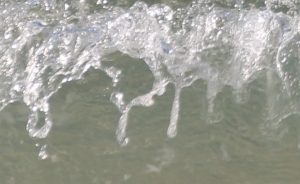 “The surface of a water drop is constantly moving, due to what is called ‘Brownian motion,’ or ‘thermal motion,’” said Prof. Carmon. “Thermal motion on the outer surface of a water droplet impacts many processes including breaking of a single drop into many smaller droplets.”
“The surface of a water drop is constantly moving, due to what is called ‘Brownian motion,’ or ‘thermal motion,’” said Prof. Carmon. “Thermal motion on the outer surface of a water droplet impacts many processes including breaking of a single drop into many smaller droplets.”
The researchers experimented with what are called “capillary oscillations” in a water droplet. These motions are governed by water‘s surface tension, the force that gives a drop of water its shape. Water droplets are a fundamental structure of self-contained liquid bounded almost completely by surfaces
In their experiment, photons (particles of light) were confined to circulate along the equatorial line of the droplet, at a depth of 180 billionth of a meter. Being so close to the drop interface, which host the thermal capillary waves, enabled recording this thermal motion of water.
According to the researchers, once inside the water droplet, light circulates up to 1,000 times around the circumference of the droplet, which helps in measuring the capillary waves. The number of times that light circulates is called ‘optical finesse’ and can be used to monitor the movements down to the size of 1/1000th of the very small wavelength of light.
“Optocapillary cavities can support a controlled energy exchange between light and capillaries,” explained the researchers.
When light waves and water waves co-resonate in certain ways – when they pass through one another – there can be an exchange of energy between the two types of waves. The data from that interaction could be used to develop a new type of sensor. For example, if a biological cell is placed into a water drop the cell’s reaction to waves – whether waves of light, water or sound – can reveal information about the nature of the cell.
“Based on a cell’s reaction to light, water and/or sound waves, it may one day be possible with the optocapillary resonator to determine whether a cell is normal or a malignant cancer cell,” concluded the researchers.
The Scientific Potential of Silence
Mystics have long known the pure potentiality of silence. Silence is not a dead state, it’s an infinite pool of the unknown, vibrating with feeling intuition that is forming within the deeper chambers of unconscious mind. Yet, in the fast-paced world of science – the demand is to talk, talk, talk, eat a Big Mac and talk some more. Consumer culture prioritizes talk over the depth of thought, perhaps putting a stigma on today’s hidden Einsteins and Ramanujans. Does the requirement of the modern physicist to collaborate and communicate block the wonder and discovery brought about by silence and solitude?
Drawing on the approaches of Newton, Einstein, Cavendish and Dirac, Felicity Mellor, writing for Physics World, highlights the recurring role that silence has played throughout the history of physics and asks if the “enforced interaction” that is now placed on modern-day scientists is allowing them enough time to think.
Sir Isaac Newton, in particular, was a proponent of isolated working, shutting himself away in his rooms, publishing reluctantly and restricting his audience to only those he thought capable of appreciating his work. Indeed, it was only after much persuasion that he eventually agreed to his Principia being published in full.
Physicists do best by striking a balance between silence and communication, with Mellor citing the example of Werner Heisenberg, who retreated to the tiny island of Heligoland to escape hay fever and the constant chatter of his colleague and mentor Niels Bohr. It was here that Heisenberg was able to reflect on discussions with Bohr and lay down the basis of his formulation of quantum mechanics.
While reminding us that individual genius is not the sole source of creativity in physics, Mellor questions the extent to which modern-day scientists have control over their own level of communication. “Communication, yes, but on the physicist’s own terms, in that manner that suits each individual best,” she writes.
Peter Higgs, for example, recently claimed that he would not have been able to complete his Nobel-prize-winning work in the current research environment, stating that the peace and quiet he was granted in the 1960s is no longer possible.
In her article, Mellor also points to the rationale behind the current institutes of advanced studies, which aim to bring researchers together from a number of disciplines to promote collaborative research projects.
“These are laudable aims, but it is striking that the need for periods of withdrawal and solitude are no longer acknowledged as a means of facilitating intellectual advances,” Mellor writes.
“History shows us that the most successful physicists have been able to strike a balance between coming forth and holding back, between public discussion and private contemplation. Yet reticence and silence seem to have no place in the modern research agenda.”
July 11, 2016
Kingdom of Gold
In the kingdom of gold,
the currency is old
folded in notes of love,
a blind exchange
of fear and rage
where head-stamped coins
swap speech and groin,
grasping through miasma
of iconic gloom.
Yet castles built
still of finer sand
surely wash to silt
as tides will rise.
(Yes, tides, will rise).
Step over false kingdom,
beloved, take heart
in the fluid law
of statutory wilderness.
Listen to the pulse
of a silent sign,
deep in the belly of man.
Leave dreaming spires behind,
fly over thunders of lies
and out through infinity of skies.
Georgi
July 5, 2016
You didn’t, you did it, you did it, you did.
Fears of feathered fringes of fragments flying
out of here.
Out of body, out of mind
you didn’t, you did it, you did it, you did.
Suffering, he is a river,
winding his way through watered bypass
formed by the rock,
and the ridge and great
arching bowl of the ocean’s bed,
only to be blown into cloud
that children might glance
and find a darkened dagger here
you didn’t, you did it, you did it, you did.
Stop pretending she’ll control it
or somehow freeze the flow
stop believing it’s a constant
and stopping it all,
let it go,
Life, she is a poet
and Jesus too.
broken in crimson waters.
Who did it?
you didn’t, you did it, you did it, you did.
Georgi
I AM HERE - Opening the Windows of Life & Beauty
- Georgi Y. Johnson's profile
- 30 followers


